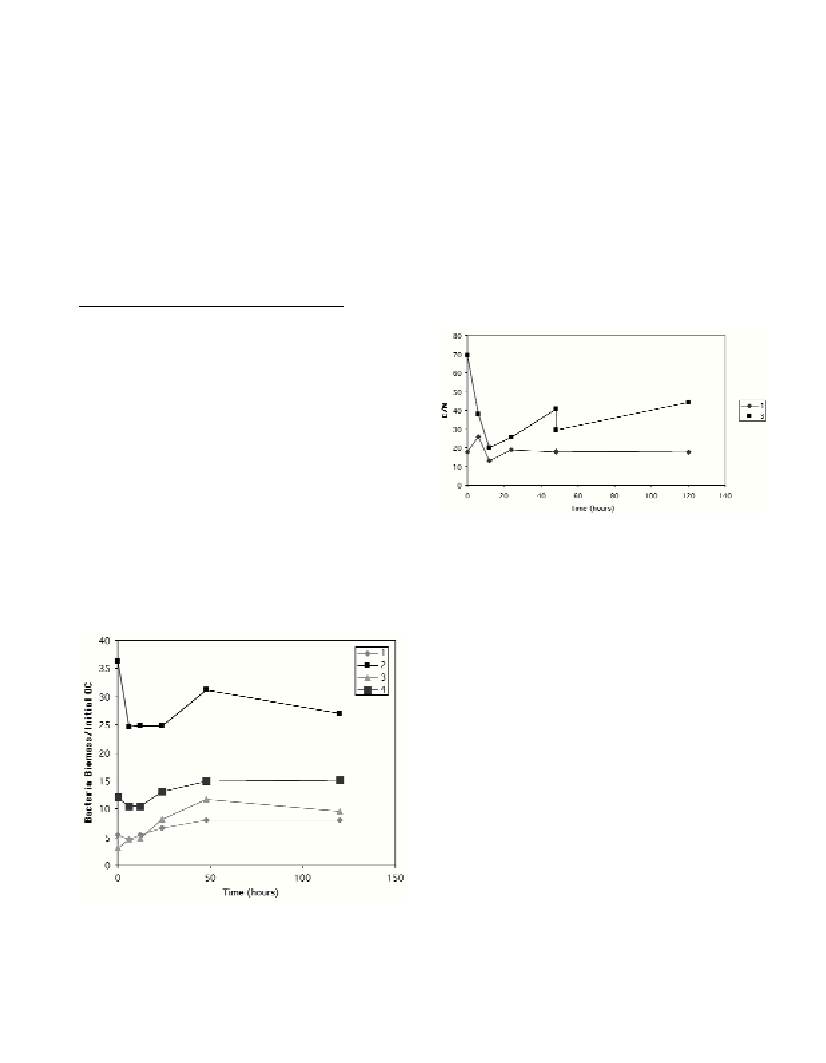Rapp. Comm. int. Mer Médit., 37,2004
204
MEDFLUX : BIODEGRADABILITY OF LARGE PARTICLES OF DIFFERENT SINKING VELOCITIES
Goutx M.
1
, Moriceau B.
2
, Guigue C.
3
, Pete R.
3
, Lee C.
4
, Armstrong R.
4
, Wakeham S.G.
5
, Peterson M.L.
6
1
Laboratoire de Microbiologie Marine, Campus de Luminy, Marseille, France - * goutx@com.univ-mrs.fr
2
Institut Universitaire Européen de la Mer, Site du Technopole Brest-Iroise, Place Nicolas Copernic, Plouzane,
France - Brivaela.Moriceau@univ-brest.fr
3
Laboratoire de Microbiologie Marine, Campus de Luminy, Marseille, France -guigue@com.univ-mrs.fr, pete@com.univ-mrs.fr
4
Marine Sciences Research Center, Stony Brook University, Stony Brook, NY, USA -cindylee@notes.cc.sunysb.edu
5
Skidaway Institute of Oceanography, Savannah, GA, USA - stuart@skio.peachnet.edu
6
Department of Oceanography, University of Washington, Seattle, WA, USA - mlpmlp@u.washington.edu
Abstract
Particle ?ux is a major vector for the export of biological production from the euphotic layer to the deep ocean. The mechanisms of
transformation of organic carbon during its transfer from the surface to the sediment, are important to determine the role of oceans as
source or sink of CO
2
, a major goal for oceanographic studies. Of particular interest are those implied in degradation and mineralisation
of aggregates in the less known mesopelagic layer of the water column (1). In May 7-14 2003, during a multidisciplinary cruise on board
the RV Seward JohnsonII, in North-Western Mediterranean, the NSF-MedFlux program offered a unique opportunity to collect and work
on specific components of the particle ?ux with the aim to elucidate decomposition process during particle sinking.
Key Words: organic matter degradation, particle ?ux
In the Central Ligurian sea, at the DYFAMED site, lateral transfers
are weak, and surface production is rapidly transported to depth
through a heterogeneous particle ?ux. Indeed, the functioning of
ecosystems in the productive layer is driven by size structure predator-
prey relationships and produces a large variety of sinking particles (2).
Flux composition and resistance to bacterial attack of its various
components during sinking are important parameters to identify the
critical depths of organic matter mineralization in the water column
(3).
In order to characterize the ?ux, large particles were collected from
200 m depth using a new conical, free-?oating NetTrap and sorted by
sinking velocity using an elutriator. Particles with four different
settling velocities were incubated at in situtemperature for several
days. Bacterial numbers and degradation of organic carbon, lipids and
biogenic silica were followed as a function of time. Fig. 1 shows the
change in bacterial biomass in the four fractions over time. The
biomass is normalized to the amount of organic carbon initially added.
Fig. 2 shows the change in OC/TN in two of these fractions over time.
The TN was too low to measure in the other two fractions, but it is
clear that the initial C/N was very different in fractions separated by
settling velocity. Results give insight into relationships between
ecosystem size structure and biogenic matter export process to depth
by the particle ?ux. Lipid, amino acid and carbohydrate data will
provide further information on the composition of the material.
Fig. 1. Change with time in bacterial biomass normalized to initial C
(mmol bact C/mol total C) in samples separated by settling velocity.
Fig. 2. Change in C/N molar ratio with time in two of the samples sepa-
rated by settling velocity.
References
1-Armstrong, R. A., C. Lee, J. I. Hedges, S. Honjo, and S. Wakeham,
2002. A new mechanistic model for organic carbon ?uxes in the ocean,
based on quantitative association of PoC with ballast mineral. Deep-Sea
Res.,II, 49, 219-236.
2-Goutx, M., Momzikoff A., Strilby L., Andersen L.V., Marty J.C., and
Vescovali. I., 2000. High-frequency ?uxes of labile compounds in the
central Ligurian Sea, northwestern Mediterranean. Deep-Sea. Res. I, 47:
533-556.
3-Sheridan C.C., Lee C., WakehamS.G., and Bishop J.K.B., 2003.
Suspended particle organic composition and cycling in surface and
midwaters of the equatorial Pacific Ocean. Deep-Sea Res. I, 49: 1983-
2008.

